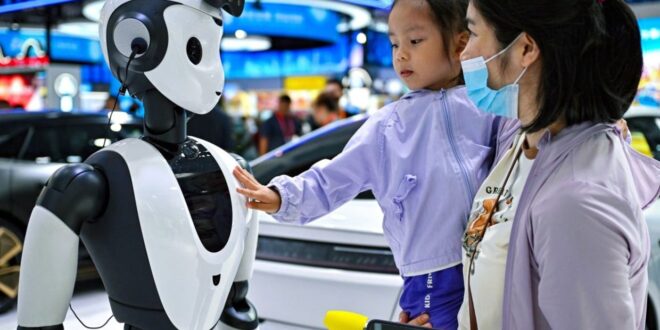“Digital humans”, optical chips, Internet satellites and deep-sea power stations have been identified as some of the biggest challenges in Chinese science, engineering and industry last year.
They are among a list of 30 areas that got the most attention from research and industry groups in China.
The annual list – which also includes high-performance graphics processing units and future space exploration tools – was released by the government-funded China Association for Science and Technology, or CAST, on Tuesday.
Research areas often see significant progress after they appear on CAST’s annual lists, with some even getting resolved within a year or two of being highlighted.
Among the 10 key science challenges is research into “digital humans” and robots with both intelligence and emotions – an area the government has identified as a source of economic growth for the country.
Improving the efficiency and sustainability of coal power by pairing plants with hydrogen production is also on the list of science challenges, along with developing efficient ammonia-hydrogen-based internal combustion engines with near-zero emissions.
There are also bigger picture research areas, like trying to discover the biological basis behind how plants use light at high efficiencies, and if fossils of ancient humans found in China are the ancestors of modern Chinese.
The top 10 engineering and technical challenges include research into developing deep-sea platforms for power generation, the reliability of high arch dams in earthquake-prone areas, and improving autonomous engineering software.
Developing technology and theories to control the quality of large-size semiconductor silicon single crystals – which could improve the efficiency and power of advanced semiconductors like memory chips and photovoltaic cells – is also on the list.
The engineering section also includes brain-computer interfaces, which China and the US began testing on humans this year, and research into detection spacecraft for “ice giant” planets like Neptune, which Nasa has also identified as a priority research area.
Industrial technology challenges make up the final 10 areas on the list and include green manufacturing of drugs through precision chemistry and using clean energy to make low-carbon iron.
Also highlighted is the development of “independent and controllable” high-performance GPU chips for advanced computing, and developing high-speed and high-capacity optical transmission technology under current chip limitations that could be used for telecoms and the Internet.
The application of cloud network technology for Internet satellites, which can improve efficiency and data management, is also identified as a key area of focus.
There has been significant progress made on the issues highlighted by CAST in last year’s list – presented as a list of questions – especially on industrial technology development.
One question was how carbon fibre composite materials could be integrated into ultra-high-speed trains. China last month unveiled the world’s first carbon fibre composite passenger train.
Another question on how large-scale energy bases could be developed in China’s desert areas was addressed when a 16 million-kilowatt wind and solar plant opened in the Kubuqi Desert, Inner Mongolia, at the end of last year.
At the start of this year, the Jiangsu province Department of Ecology and Environment said a method had been developed to remove nearly 30 pollutants from waste salt to meet quality standards, addressing another challenge on last year’s list.
Research has also advanced on some of the large-scale challenges from last year, such as how crops can be developed to adapt to soil changes brought on by climate change, and the development of sustainable agriculture technology. – South China Morning Post
 BeritaKini.biz Berita Viral Terkini di Malaysia
BeritaKini.biz Berita Viral Terkini di Malaysia





